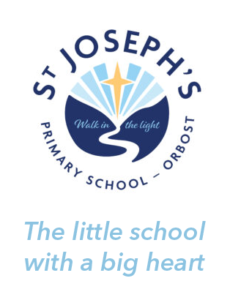Kitchen/ Garden
Sponsored by Stephanie Alexander Kitchen Garden (SAKG), learners have the opportunity to plant, harvest, prepare and enjoy a meal together every week. This is an opportunity to promote healthy eating, develop an understanding of where our food comes from and food preparation. The program provides another avenue to stimulate conversation through oral and written vocabulary.
Aboriginal and Torres Strait Islander Learning
‘All Aboriginal and Torres Strait Islander children and young people achieve their full learning potential, are empowered to shape their own futures, and are supported to embrace their Culture and identity as Australia’s First Nations peoples’
Languages Other Than English (L.O.T.E.)
Our students are learning Auslan.
The word ‘Auslan’ is a portmanteau that stands for Australian Sign Language. It is not an acronym and therefore never spelt AUSLAN. It is the language of the Deaf community of Australia and is a visual language that uses hand, arm and body movements to convey meaning and helps to remove the communication barriers in the Deaf and Hard of Hearing community.
Auslan users do not “speak Auslan” as it is not a spoken language like French or Japanese. Instead, Auslan users “sign or use” Auslan to communicate.
In a school setting, Auslan provides fantastic opportunities for students to engage with Deaf students or members of the Deaf community. Learning Auslan can provide insight into its cultural heritage and give learners an opportunity to develop intercultural capabilities, understanding and respect for others. In schools that offer Auslan programs as an additional language, Deaf students have an increased opportunity to expand their peer networks, potentially increasing their social circle, their resilience and inclusion in the school community. L2 students learning in a school attended by Deaf students have a unique opportunity to use their new language on a daily basis in an authentic context, impacting on accessibility and respect for linguistic and cultural difference (Australian Curriculum, 2021).
There are many benefits of learning Auslan which include:
-
development of neural pathways and cognitive processes unique to using a visual language
-
greater access to the curriculum using increasingly sophisticated Auslan for first language (L1) learners
-
capacity to communicate with peers, friends and family members who use Auslan
-
improved capacity for visual-gestural communication
-
access to alternative ways of thinking and expressing ideas
-
opportunities to develop social justice values
-
development of interpersonal skills, access to wider social networks and more diverse experiences
-
appreciation of the notions of Deafhood, cultural identity and community membership
-
increased understanding of inclusion and diversity and awareness of deafness as a difference rather than as a disability
-
increased understanding of language acquisition, language systems and learning processes
-
enhanced development of overall literacy capabilities
-
accessibility for some non-traditional learners, students with disability and those who are primarily visual learners.
Design & Technology
Computers and ipads are integrated into our classroom teaching. Network facilities are connected throughout the school. Our students are able to use the Internet for specific educational research purposes. For safety reasons, our school has facilities which confine and restrict student’s to searching only vetted sites with a cache. All students and families are expected to agree to our e-learning acceptable use agreement at the beginning of each school year in order to participate in technology-based learning.
Digital media is a valuable educational resource and beneficial to our Learners. Such clips need to be incorporated into the curriculum with a definite educational purpose.
A few points to remember:
- All media clips shown to children must be viewed prior by the teacher
- All DVD’s shown to Primary aged children must be rated G
- Parent permission is required to view PG
- Please be mindful of the Copyright associated with media used in the classroom
Physical Education
We believe that engaging in a range of physical activities regularly enables student to develop competence and confidence in movement skills; fosters positive social behaviour and enhances resilience.
Therefore, at St Joseph’s Primary School, students develop qualities of good sportspersonship as they participate in:
- weekly Physical Education lessons
- swimming lessons at Lakes Aquadome prior to summer (Term 3)
- sporting carnivals within the local area and beyond
- a range of sporting events like football and hockey clinics; winter and summer sports
Visual Arts
At St Joseph’s we believe that engaging in visual arts affords our students a host of learning opportunities.
Through their journey of discovery in art lessons students:
- Create art works to express and challenge ideas
- Learn about relationships between art works and viewers
- Display art works to enhance meaning for viewers
- Improve skills as they make discoveries, experiment and problem solving using a range of techniques and processes
- View the world through a range of different lenses and contexts
- Recognize the significance of visual arts in history and cultures
- Explore, and respond to, the works of other artists
